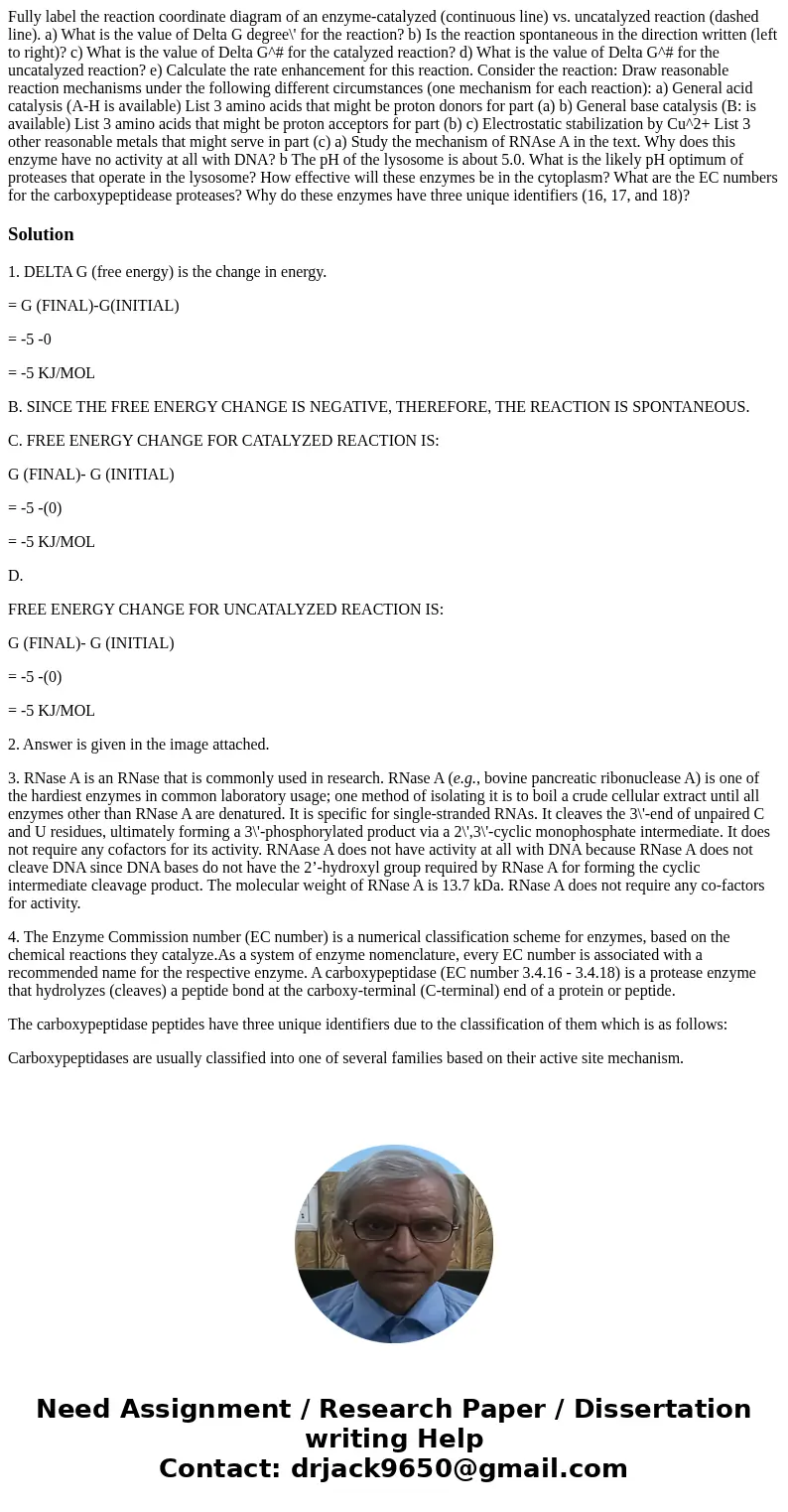Fully label the reaction coordinate diagram of an enzymecata
Solution
1. DELTA G (free energy) is the change in energy.
= G (FINAL)-G(INITIAL)
= -5 -0
= -5 KJ/MOL
B. SINCE THE FREE ENERGY CHANGE IS NEGATIVE, THEREFORE, THE REACTION IS SPONTANEOUS.
C. FREE ENERGY CHANGE FOR CATALYZED REACTION IS:
G (FINAL)- G (INITIAL)
= -5 -(0)
= -5 KJ/MOL
D.
FREE ENERGY CHANGE FOR UNCATALYZED REACTION IS:
G (FINAL)- G (INITIAL)
= -5 -(0)
= -5 KJ/MOL
2. Answer is given in the image attached.
3. RNase A is an RNase that is commonly used in research. RNase A (e.g., bovine pancreatic ribonuclease A) is one of the hardiest enzymes in common laboratory usage; one method of isolating it is to boil a crude cellular extract until all enzymes other than RNase A are denatured. It is specific for single-stranded RNAs. It cleaves the 3\'-end of unpaired C and U residues, ultimately forming a 3\'-phosphorylated product via a 2\',3\'-cyclic monophosphate intermediate. It does not require any cofactors for its activity. RNAase A does not have activity at all with DNA because RNase A does not cleave DNA since DNA bases do not have the 2’-hydroxyl group required by RNase A for forming the cyclic intermediate cleavage product. The molecular weight of RNase A is 13.7 kDa. RNase A does not require any co-factors for activity.
4. The Enzyme Commission number (EC number) is a numerical classification scheme for enzymes, based on the chemical reactions they catalyze.As a system of enzyme nomenclature, every EC number is associated with a recommended name for the respective enzyme. A carboxypeptidase (EC number 3.4.16 - 3.4.18) is a protease enzyme that hydrolyzes (cleaves) a peptide bond at the carboxy-terminal (C-terminal) end of a protein or peptide.
The carboxypeptidase peptides have three unique identifiers due to the classification of them which is as follows:
Carboxypeptidases are usually classified into one of several families based on their active site mechanism.

 Homework Sourse
Homework Sourse